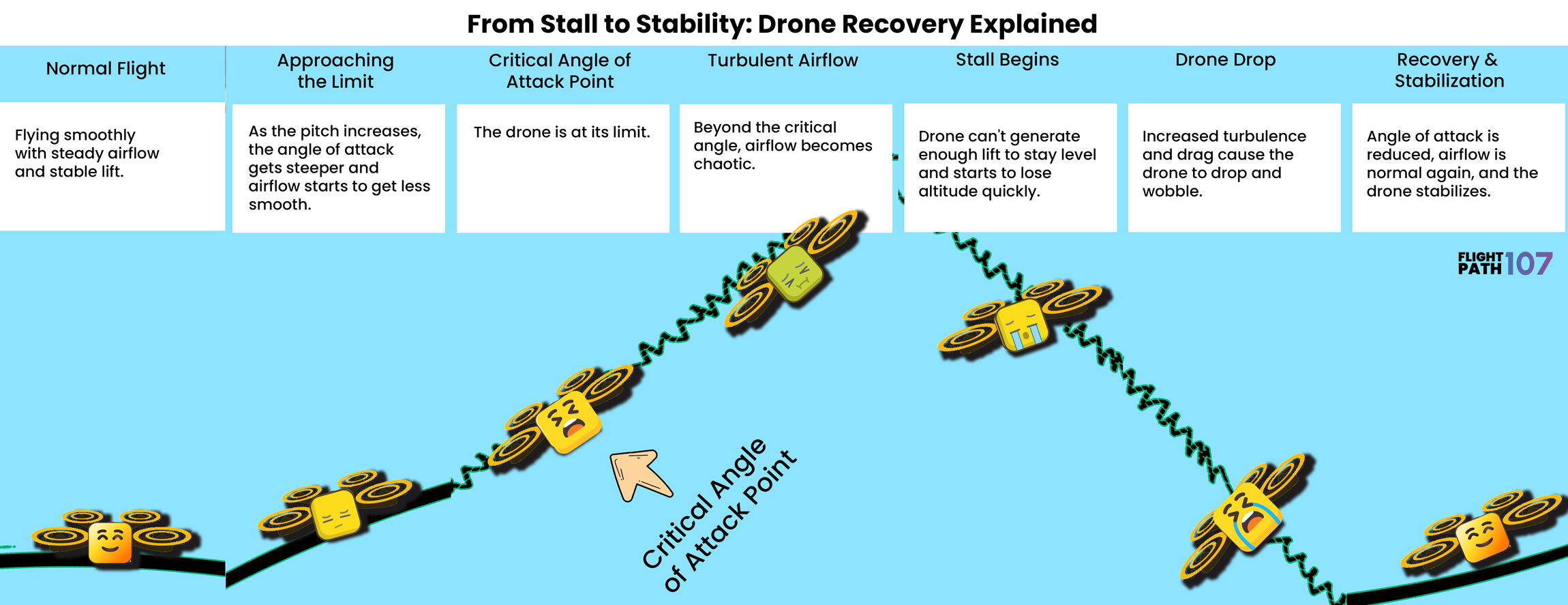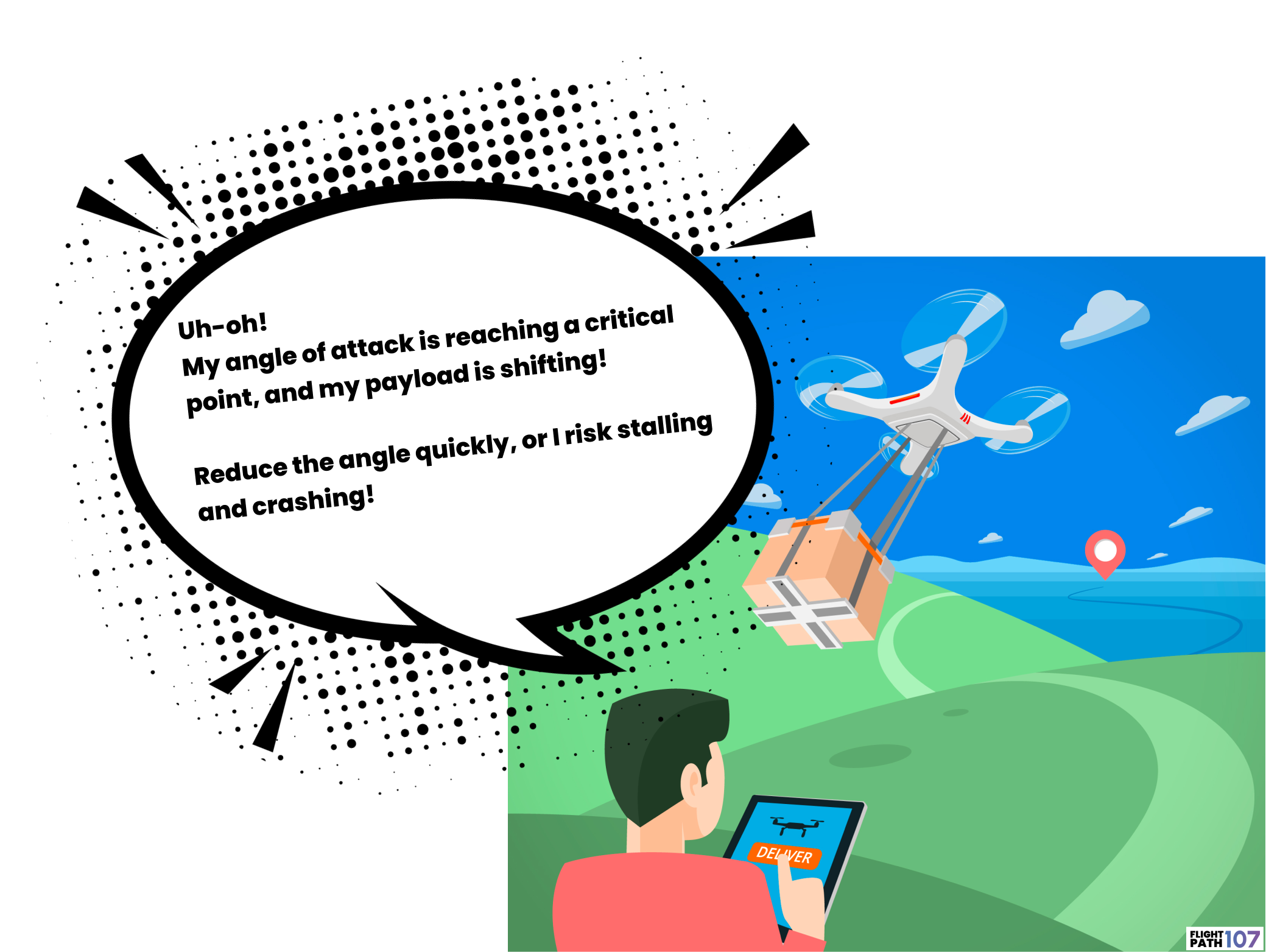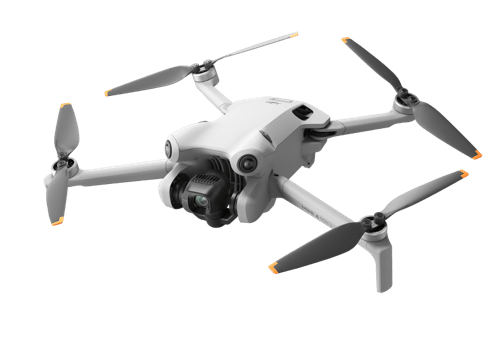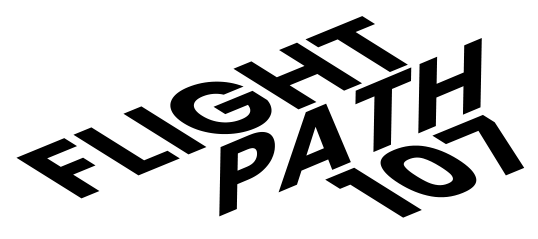How Center of Gravity, Angle of Attack, and Stalls Impact Flight
Lesson Breakdown:
First, we’ll start by explaining the center of gravity (CG), which is essentially the “balance point” of an sUAS. The location of the CG influences how the stability of your sUAS behaves during flight, especially when making turns or adjusting altitude.
Next, we’ll look into the critical angle of attack. This is the angle between the drone’s wings and the airflow, and when it becomes too steep, the airflow can’t smoothly pass over the wings, leading to a stall.
Finally, we’ll look at stalls—what they are, how they happen, and how understanding the CG and Critical Angle of Attack can help you avoid them!
By the end of this lesson, you’ll have a clearer understanding of these interconnected concepts and how to manage them to keep your sUAS flying at its best.
Center of Gravity
The center of gravity (CG) is the point where the entire weight of a drone is balanced in all directions. Imagine it as the exact spot where all the drone’s weight is concentrated.
Maintaining the correct CG is essential for stable and controlled flight. If the CG is off—too far forward, backward, or to the side—the sUAS may become difficult to control or even unsafe to fly.
When adding or removing equipment, such as cameras or sensors, it’s essential to make sure the CG stays within the limits specified by the manufacturer. Always evaluate the CG of the sUAS after making changes to avoid issues with stability and performance during flight.
Critical Angle of Attack
The critical angle of attack is like the “no-go” zone for your sUAS as its turning. This is where it’s saying, “Whoa, that angle is too steep!”
In simpler terms, the critical angle of attack can be defined as the steepest angle at which the sUAS wing can meet the oncoming airflow while still generating enough lift to keep the drone flying.
A stall happens when the wing exceeds this critical angle, disrupting the smooth airflow and causing a rapid loss of lift, which can lead to the drone stalling and potentially crashing.
Stalls
An sUAS stall occurs when the airflow over the drone’s propellers is disrupted to the point where they can no longer generate sufficient lift. This typically happens when the angle of attack — the angle between the propeller or wing and the oncoming air — becomes too steep.
How A Stall Happens:
In the visual aid below, you’ll find a step-by-step breakdown that explains what happens when an sUAS goes from a smooth, stable flight to the point where a stall occurs and how to recover from it.
As a drone’s angle of attack increases, it reaches a critical point where the airflow becomes turbulent, diminishing lift capacity.
This leads to a stall, causing the drone to lose altitude and potentially spin out of control. With the right recovery action preparedness, you can regain stability and continue flying safely.
Click image to enlarge

- 1Normal Smooth Flight
The aircraft is flying smoothly, maintaining a balanced angle of attack, which is the angle between the wing and the oncoming air. - 2Approaching the Angle Limit
As you increase the drone’s pitch, the angle of attack gets steeper. - 3Reaching CRITICAL ANGLE OF ATTACK Point
When you hit the critical angle of attack, the airflow over the wings starts to get turbulent. - 4Experiencing Disrupted Airflow
Beyond this point, the airflow gets so turbulent it begins destabilizing the smooth lift the propellors usually creates. If you keep pushing, the UA can’t handle it anymore, and the lift looses its stabile ascent. - 5STALL
A stall now happens when your UA’s propellers can’t generate enough lift to keep flying level. This is when your UA is pushed to its breaking point and a stall occurs. - 6Experiencing Drone Drop
The increased angle of attack, with all that turbulence and drag, causes the lift to drop rapidly, and the drone starts to lose altitude and might even spin out of control. - 7Prevent Crash: Recover & Stabilize
To recover, you ease off the pitch, lower the angle of attack, and let the airflow smooth out again. Once the airflow is back to normal, the drone stabilizes, and you’re good to go.
Nose-Heavy vs.
Tail-Heavy
Center of Gravity
Impact of Weight Distribution on Drone Stall Behavior
The location of the center of gravity (CG) affects how fast your drone needs to fly to avoid stalling.
For example, if you move the CG forward, like by adding a camera to the front of your drone, the drone might stall at a higher speed. S
The angle at which the drone stalls doesn’t change. What’s changing is how fast you need to go to keep flying without stalling, depending on where the weight is.
So, while the speed at which the drone stalls can change, the angle where it loses lift stays the same.
Nose Heavy Drone:
- What It Means: The front of the drone is heavier.
- Effect: The drone needs to fly faster to avoid stalling. For example, if it normally stalls at 55 mph, the extra weight in the front might cause it to stall at 65 mph.
- Why: The heavier front shifts the center of gravity forward, making it harder for the drone to maintain level flight. To counteract this, the drone must fly faster to generate enough lift to stay in the air and prevent stalling.
Tail Heavy Drone:
*In aviation, “aft” refers to the rear part of the aircraft, or towards the back.
- What It Means: The back of the drone is heavier.
- Effect: The drone can fly slower before it stalls. For example, if it normally stalls at 55 mph, the extra weight in the back might allow it to stall at 45 mph.
- Why: The heavier back shifts the center of gravity toward the rear, making it easier for the drone to pitch its nose up. This allows the drone to achieve a higher angle of attack, which can generate lift at lower speeds. However, a rear-heavy configuration can also make the drone less stable and harder to control.





